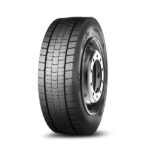When professionals face rising trucking rates, severe inflation and other challenges, many look for accessible ways to reduce transportation costs. Here are some reliable strategies to consider.
Transition to Electric Vehicles
Some money-saving ventures have high upfront costs but are more affordable in the long run. Such is often the case when decision-makers begin switching to electric vehicles. However, the savings are often substantial. When one American trucking company started using them, costs associated with vehicle charging were up to $250 less than filling them with diesel. That advantage can quickly add up over time, especially due to how often fill-ups must happen.
In Europe, researchers investigated approximately 400,000 trucks operating on the continent for a year. They found the top 10% of truck stops accounted for 50% of break-related activity. Those involved recommended those locations get electric charging points by 2027. That change should increase electric truck adoption rates while reducing transportation professionals’ anxiety about finding charging points.
Another study examined real-world trip data from more than 46,000 passenger and light-duty commercial vehicles in 1,300 fleets and 17 European countries. The results showed almost 60% of fleets would cut costs using electric-powered options. More specifically, a seven-year life span analysis indicated fleet managers could save £7,960 per vehicle, including an average of £5,152 on fuel.
Fight Rising Trucking Rates With Optimisation Tools
Transportation experts should also conquer increasing trucking costs with purpose-built products that help them use resources more effectively. For example, some tools help managers distribute loads more evenly across all trucks, ensuring those vehicles are as full as possible before departing on their routes. That approach can reduce the trips required to get all items to their destinations.
However, people can get even better results against rising trucking rates by using route optimisation products that help drivers make the most of their time and avoid situations out of their control that could slow them down. One expert associated with routing and scheduling software estimates fleet managers could save 10–30% overall and cut at least 20–25% of their running costs with such tools.
Most of these offerings have automated components that reduce the human oversight necessary for load and route planning. The ability to do those tasks with smaller teams could also minimise costs. However, managers must be careful to maintain human insights. Even the most advanced tools sometimes make errors and people are essential for recognising when to override a system’s recommendations.
Reduce Transportation Costs Through Improved Driver Training
Although no single strategy can reduce transportation costs in every situation, leaders often find they can make impressive progress by focusing on driver education. One possibility that’s gaining momentum is to teach them eco-driving techniques. These focus on helping people maximise their efficiency and sustainability on the road.
Statistics from European driver training programmes indicated participants could save 5–10% in truck fuel costs with the skills they learned. However, eco-driving advocates stress the importance of looking beyond fuel-saving benefits to recognise other potential expense reductions. For example, learning to drive more sustainably can reduce wear on tyres and other components, decreasing the need for costly, urgent repairs.
Eco-driving techniques also teach people to operate their vehicles more smoothly, which could mean they reach their destinations faster than expected. Plus, as more grasp these essential skills, they’ll drive their trucks in safer ways for themselves and everyone else on the road. That could result in fewer accidents, bringing rising trucking rates for insurance down.
Take Maintenance Seriously
Rising trucking rates are largely outside fleet managers’ control, causing many to assess the factors within their spheres of influence. Vehicle maintenance is one of them. Staying on top of upkeep can help managers avoid expensive repairs or instances of drivers stranded on the road, far from service stations.
Indeed, transportation professionals can’t control all maintenance aspects. Research from North American service stations showed a 2.3% labour cost increase between the fourth quarter of 2022 and the first quarter of 2023. During that same period, parts costs fell by 0.4%.
However, when people perform upkeep on the recommended schedule, they’re more likely to notice problems earlier, which could mean it costs less to fix them. One predictive maintenance platform called Pitstop builds a vehicle health profile based on error codes and data analytics. Fleet managers can then use it to schedule service appointments. That’s a practical way to reduce transportation costs by limiting downtime.
Even simple steps — such as scheduling regular oil and filter changes — can help people fight rising trucking costs. Keeping fleets in better condition for longer can help owners get their money’s worth.
Better Cost Control Is Possible
These tips will help people prevent cost overruns while managing a transportation business. Although many elements remain out of their control, they can balance things out by influencing the situation in their favour. All these suggestions to reduce transportation costs take time and dedication to enact, but they pay off more often than not.
Emily Newton








